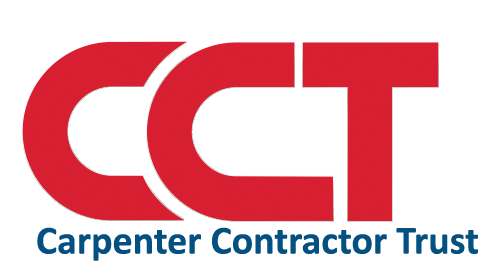With so much to bring to the table, trade unions will continue to attract, train, retain and elevate the most skilled craftworkers New Jersey has to offer.
BY ANTHONY VECCHIONE, CONTRIBUTING WRITER ON MAY 13, 2024
Construction is a powerful engine that drives New Jersey’s economy. However, according to the Eastern Atlantic States Regional Council of Carpenters (EASRCC), the appetite for creating middle-class construction jobs is not keeping pace with the supply of qualified trades people seeking a sustainable living. As a result, the industry is faced with a paradox and some challenges.
Between 2022-2024, EASRCC was unable to accept nearly 14,000 individuals due to the lack of employers willing to hire them, according to William C. Sproule, the organization’s executive secretary-treasurer.
That said, EASRCC develops, trains, and empowers people of the skilled construction trades. The union has a strong presence in Delaware, New Jersey, Maryland, Pennsylvania, the District of Columbia, Virginia, and West Virginia. In New Jersey alone, it has nearly 20,000 union carpenters and invests nearly $30 million a year in training, says Sproule.
The union has invested in an innovative training program designed to cultivate the next generation of construction entrepreneurs through its entrepreneur boot camp.
“These members believe and understand the value of hiring and creating middle-class jobs,” Sproule says. “Member entrepreneur training has been and continues to be an effective means of creating new small-, women-, minority- and veteran-owned businesses that are willing, ready, and able to hire the skilled individuals we train.”
Jill Schiff, chief operating officer for the Associated Construction Contractors of New Jersey (ACCNJ), points out that with the prevalence of mega-projects in the region and the influx of federal infrastructure dollars, union craftworkers are in high demand. “ACCNJ is focused on keeping union wages competitive, union craftworkers available, and union standards high as these projects go out to bid and beyond,” Schiff says.
ACCNJ represents general building contractors, construction managers, and heavy highway, site development and utility contractors in New Jersey.
“Healthcare and higher education continue to invest and expand, and we are seeing more projects that focus on adaptive reuse of older or underperforming properties like shopping malls and office buildings,” says Rob Lewandowski, communications director for the Laborers’ International Union of North America (LIUNA).
LIUNA has 25,000 members in New Jersey, who work in construction: commercial and residential, transportation, energy and water infrastructure, hazardous remediation, and demolition.
Workforce development initiatives
The EASRCC hosts monthly open houses at its training centers, and participates in career days and trade shows, collaborates with high schools, teachers, guidance counselors, vocational / trade schools, community groups, and non-profits to recruit the future workforce of construction.
“We have also been intentional in our recruitment efforts to ensure that all communities understand the opportunities that are available to them,” Sproule says. “We do this through community workforce development initiatives, memorandums of understanding related to recruitment opportunities, and [providing] local communities and non-profits educational programs that include opportunities afforded through union membership and the skilled trades.”
The union also collaborates with middle schools to provide exposure to the opportunities in construction and the skilled trades earlier in life.
ACCNJ’s Schiff believes looking for a career in construction is a viable option for young people and people looking for a new career opportunity.
“The public is encouraged to participate in Construction Industry Career Day, which encourages attendees to explore, learn and enjoy a day of trying their hand at the trades while learning about the college path for management careers in areas such as civil engineering and construction engineering technology,” Schiff says. “We also offer a paid summer internship program, along with scholarships upon successful completion of a 12-week internship.”
Meanwhile, LIUNA’s apprenticeship program (The New Jersey Construction Craft Laborers Apprenticeship Program) recruits, trains, and supports men and women for careers in construction.
Partnering with public- and private-sector players is another way trade unions address workforce training.
For example, in addition to its own self-funded four-year apprenticeship program, the EASRCC works with guidance counselors, associations, middle schools, high schools, technical schools, charter schools, and colleges.
LIUNA provides career information and outreach to school districts, through county Workforce Development Boards and the New Jersey Department of Labor. LIUNA also sponsors and participates in Construction Industry Career Day, a two-day interactive career fair open to jobseekers, educators, and high school students.
Diversity
The EASRCC has built and continues to expand programs that aim to educate traditionally underrepresented groups like minorities and women about the opportunities in becoming union carpenter apprentices.
The union has also expanded the Carpenter Apprentice Readiness Program (CARP), a pre-apprenticeship program that focuses primarily on underserved communities or underrepresented populations and the recruitment of women and minorities. Sproule notes that these efforts have been instrumental in getting current apprentice enrollment in New Jersey to 40% minority and female.
Meanwhile, ACCNJ has focused heavily on helping Disadvantaged Business Enterprises (DBEs) in New Jersey build capacity.
“We believe strong relationships are often the key to success,” Schiff says. “We have invested ourselves in helping DBEs learn, grow, and compete with prime and subprime contractors who do not have the same barriers imposed upon them at the time of entering the field. Many trades have developed or participated in programs to help build or strengthen diversity.”
LIUNA has partnered with local governments and nonprofits like the New Jersey Reentry Corporation to recruit and support women and minorities into its programs. “Presently, more than 50% of our apprentices identify as Black and/or Latino and our women membership is double the national rate,” Lewandowski says.
AACNJ’s Schiff concludes, “Much of what the unions can offer to their employees is no longer found in other career choices or occupations. With so much to bring to the table, unions will continue to attract, educate, train, retain and elevate the most skilled craftworkers New Jersey has to offer, which leads to a safe and reliable workforce New Jersey will always value.”
To access more business news, visit NJB News Now.
